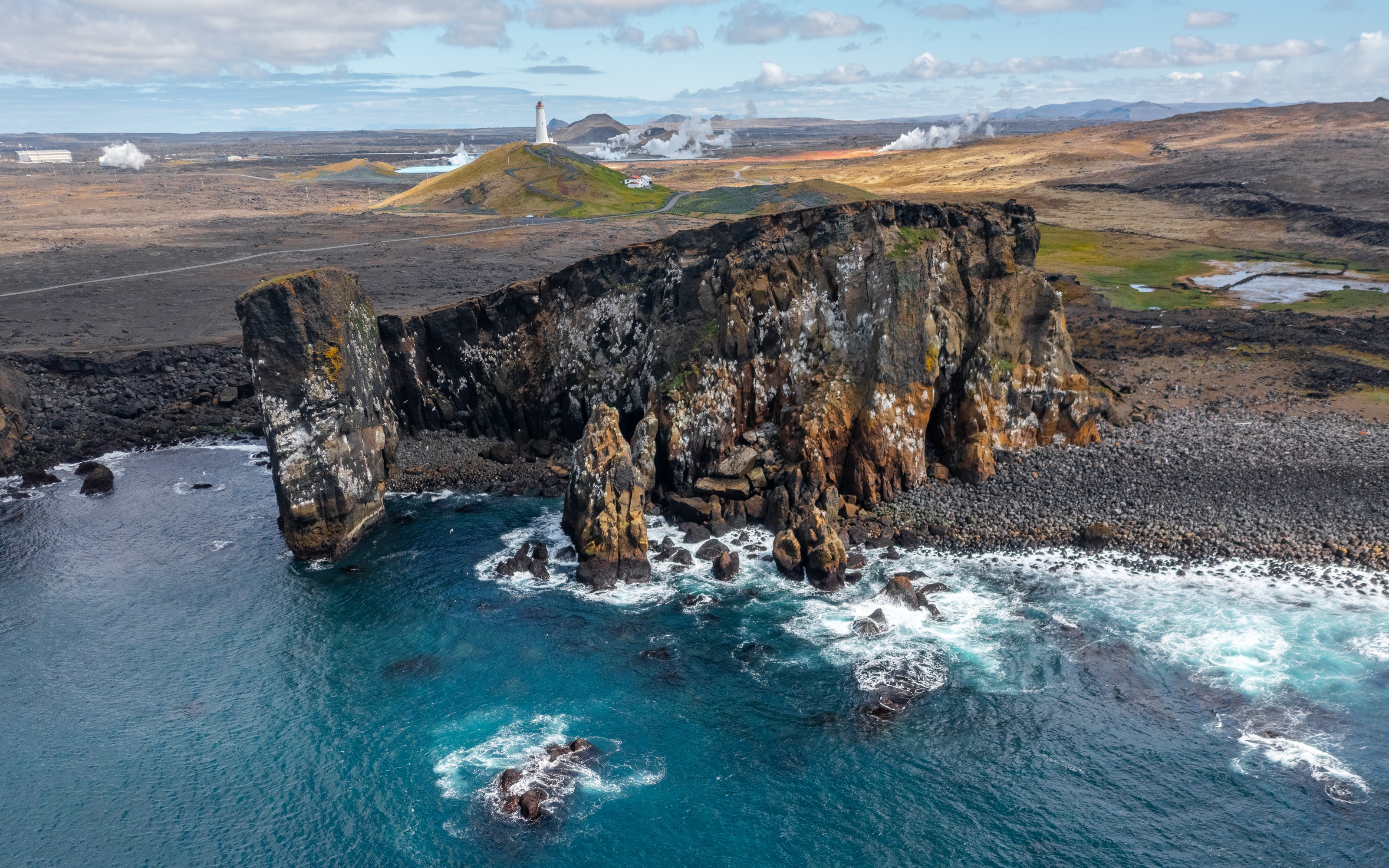Reykjanes Lighthouse: Guiding Ships Along Iceland's Coastline
Iceland’s location in the mid-Atlantic means it’s no stranger to large waves. Whipped up by the wind, the sea batters the rocky shore, littering the shallows with ragged stacks and partially concealed wave-cut platforms. For centuries, such erosion has created hazardous working conditions for seafaring communities. Over the years, too many ships have foundered on the rocks with an unbearable cost to human life, not to mention the loss of valuable cargoes.
Lighthouses, therefore, play a vital role in keeping ships and their crews safe. You’ll find them all around Iceland, helping to maintain safety in bad weather when low cloud or fog obscures the coastline. On the Reykjanes peninsula, therefore, as in similarly treacherouscoastlines both in Iceland and beyond, they are an essential tool for maritime navigation. Let’s explore the history of early lighthouse construction in the area and investigate the impact one such structure has had.
Valahnúkur – where it all began
The very first lighthouse in Iceland was built Valahnúkur in the south west of the Reykjanes peninsula. It was constructed in 1878 and at first its light helped ships navigate safely. But the quality of its build was no match for the strength of the waves. Too close to the water to be safe from the surf and impacted too by seismic activity, the lighthouse took a battering and sustained considerable damage. By 1905, the writing was on the wall.
A new lighthouse takes shape: Reykjanesviti
The lighthouse at Valahnúkur was demolished in 1908. In the meantime, however, a new lighthouse had been erected. It took shape between 1907 and 1908 on Bæjarfell hill. Architect Frederik Kjørboe and engineer Thorvald Krabbe designed it to look traditional but it was made to last – of concrete.
This white column with its red-painted light remains a much-loved landmark. Just how much affection there is for this lighthouse was evident in 2017, when it headlined a popularity poll overseen by Rögnvaldur Guðmundsson for the Icelandic Maritime Administration, beating Garðskagi (another Reykjanes lighthouse) to the top spot.
A treasured landmark
Reykjanesviti, such an important part of the country’s maritime heritage, has been a protected landmark for more than two decades. On December 1st, 2003 it was rightfully included as one of the first seven lighthouses to be put on a preservation list. The others, in case you were wondering, were Arnarnessviti (1921), Bjargtangarviti (originally built in 1913, though the current structure dates from 1948), Dyrhólaey (1927), Garðskagaviti (1897), Hríseyjarviti (1920) and Malarrifsviti (1946).
Doing the job
Reykjanesviti is still a functioning lighthouse. And that light’s important: two flashes every 30 seconds alert those at sea to its presence. It perches on a hilly site which is an inactive volcanic cone, an elevated position that enables it to be seen from further afield. A path leads up to this grassy knoll.
Reason to visit
Though you can’t go inside, as you stand beneath the lighthouse, the views are magnificent.Inland, you have a clear line of sight to the nearby geothermal area, and it’s not uncommon to see smoke rising from the ground. There are a couple of other tourist attractions nearby. One is a bronze sculpture commemorating the last great auk; it was killed in the middle of the 19th century. The other marks a more recent event: a pair of keyboards that featured in the hit 2020 movie Eurovision Song Contest: The Story of Fire Saga.
Of course, if the weather’s fine you have a clear view out to sea, across a flat volcanic plain that ends in rugged cliffs. A combination of tuff layers, pillow lava and breccia make this a dramatic landscape, while the jagged rock pillars in the surf that cause such concern for maritime vessels make a lofty perch for a plethora of seabirds.
As the waves break, it’s not hard to understand why a lighthouse was – and is – needed in this windy corner of the Reykjanes peninsula.


